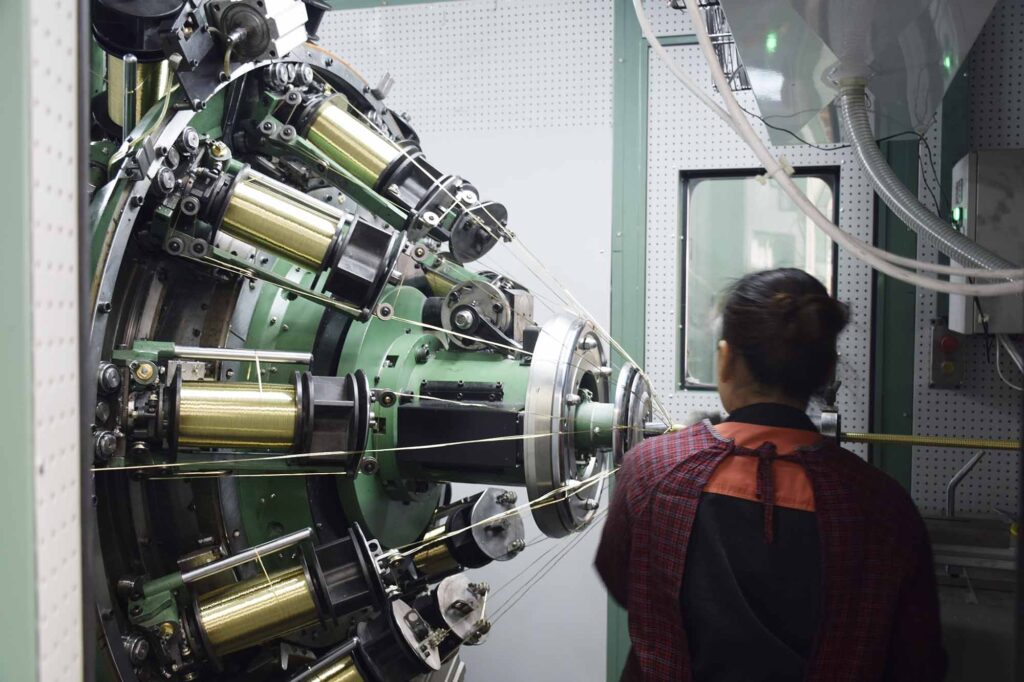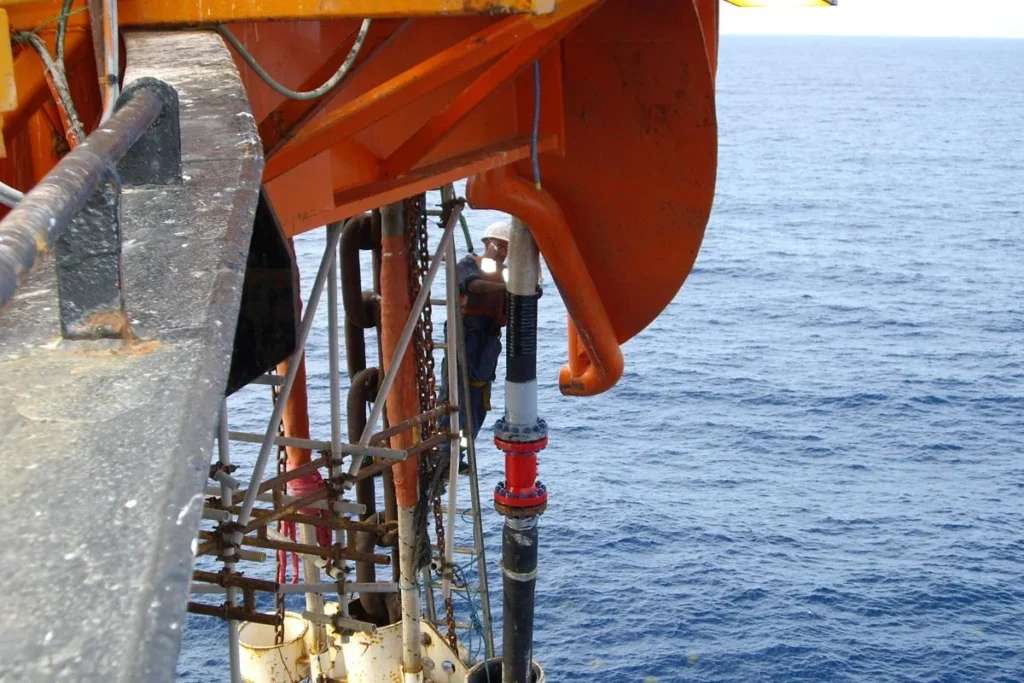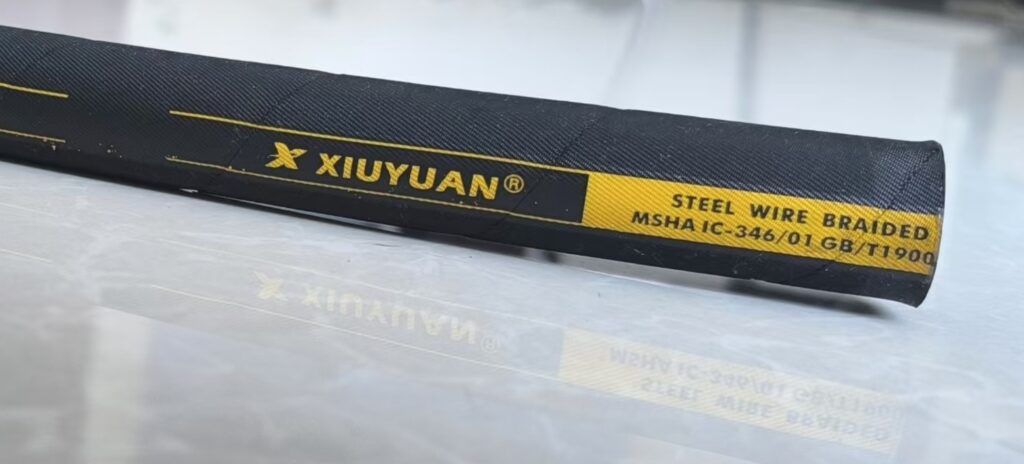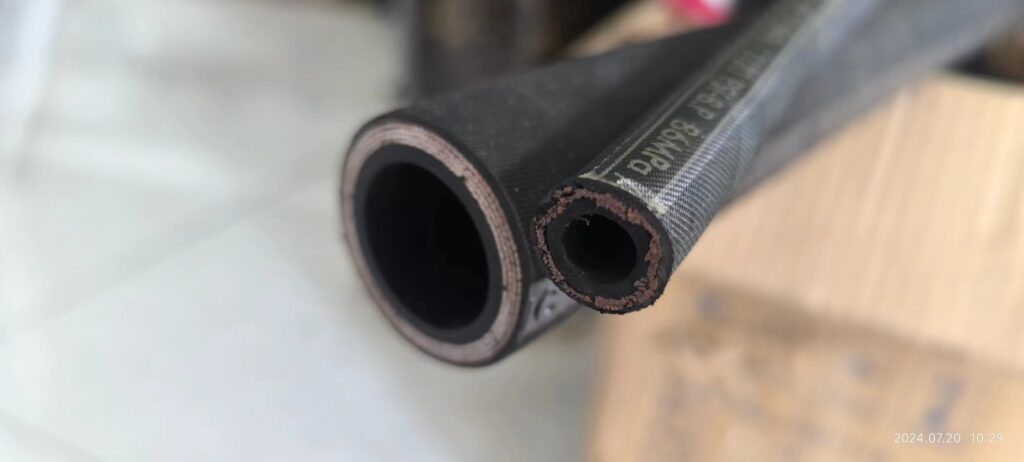Introduction
In the world of hydraulic systems, where precision, efficiency, and reliability are paramount, the choice of hydraulic hose can significantly impact performance. Among the various types of hydraulic hoses available, the twin-line hydraulic hose stands out as a versatile and specialized solution. Twin-line hydraulic hoses, also known as dual-line hydraulic hoses, offer unique advantages in specific applications, providing a streamlined solution for conveying both hydraulic fluid and control lines. In this article, we will delve into the world of twin-line hydraulic hoses, exploring their characteristics, applications, benefits, and considerations.
Understanding Twin-Line Hydraulic Hoses
Twin-line hydraulic hoses are engineered as a two-in-one solution, combining two separate hoses within a single assembly. These hoses typically consist of a high-pressure hydraulic hose and a low-pressure control or pilot hose, sharing a common outer covering. The hydraulic hose is responsible for transmitting the hydraulic fluid required to operate machinery, while the control hose carries non-pressurized fluids, often used for control and monitoring purposes.
Applications of Twin-Line Hydraulic Hoses
Twin-line hydraulic hoses find their niche in applications where space constraints, cleanliness, and simplicity are essential. Some common applications include:
Mobile Equipment: Twin-line hoses are frequently used in mobile hydraulic equipment, such as agricultural machinery, construction equipment, and forestry machines. They simplify the hydraulic system layout by combining fluid and control lines, reducing the risk of hose entanglement and damage.
Aerial Lifts: Aerial lifts, including cherry pickers and boom lifts, require both hydraulic pressure lines and control lines. Twin-line hoses offer a compact solution, improving safety and ease of operation in these applications.
Material Handling: Material handling equipment, like forklifts and conveyors, benefit from twin-line hoses, as they enable precise control and hydraulic power delivery in confined spaces.
Machine Tools: Twin-line hoses are ideal for machine tools, ensuring that hydraulic power and control signals coexist in a tidy, efficient manner, enhancing precision and reducing the risk of leaks.
Key Characteristics of Twin-Line Hydraulic Hoses
Compact Design: The most apparent advantage of twin-line hoses is their space-saving design. By combining two hoses into one assembly, they reduce clutter, making hydraulic systems more compact and manageable.
Enhanced Safety: With dual functionality in a single assembly, twin-line hoses minimize the potential for hose entanglement, reducing safety risks in mobile equipment and tight spaces.
Streamlined Installation: Installing twin-line hoses is often quicker and simpler than separately routing hydraulic and control lines. This streamlines the installation process, saving time and labor costs.
Cleanliness: Twin-line hoses help maintain a cleaner working environment by enclosing both hydraulic and control lines within a single protective cover, reducing the risk of contamination and fluid leakage.
Materials and Construction
Twin-line hydraulic hoses are typically constructed using synthetic rubber compounds for the hydraulic hose portion, ensuring flexibility and durability under high-pressure conditions. The control line is often made of thermoplastic materials, which are lightweight and flexible, making them suitable for control and monitoring functions. The common outer covering provides protection and durability to both hoses.
Selecting the Right Twin-Line Hose
Choosing the appropriate twin-line hydraulic hose for your application requires careful consideration of several factors:
Pressure Rating: Ensure that the hose assembly meets the required pressure rating for your hydraulic system. This includes considering the pressure capacity of both the hydraulic and control lines.
Size and Length: Select the hose size and length that match your system’s specifications. Be mindful of space constraints and routing requirements.
Fluid Compatibility: Verify that the hose materials are compatible with the hydraulic fluid and control media used in your application to prevent chemical reactions or material degradation.
Temperature Range: Consider the operating temperature range, especially if your hydraulic system experiences extreme temperature variations.
Flexibility: Assess the hose’s flexibility and bend radius to ensure it can navigate the required tight spaces without kinking or collapsing.
Abrasion Resistance: If the hose will be exposed to abrasive materials or environments, choose a hose with enhanced abrasion resistance to prolong its lifespan.
Maintenance and Care
To maximize the longevity and performance of twin-line hydraulic hoses, regular maintenance and care are essential. This includes:
Inspection: Periodically inspect the hoses for signs of wear, damage, or leakage. Replace any damaged hoses promptly to prevent system failures.
Cleaning: Keep the hoses clean and free from contaminants to prevent blockages and maintain fluid cleanliness.
Proper Installation: Ensure the hoses are correctly routed and secured to prevent chafing or damage during operation.
Storage: Properly store unused hoses in a clean, dry environment away from direct sunlight and extreme temperatures.
Conclusion
Twin-line hydraulic hoses offer a versatile and efficient solution for hydraulic systems that require both hydraulic power transmission and control functions. Their compact design, enhanced safety features, and cleanliness advantages make them a valuable choice in various applications, including mobile equipment, aerial lifts, material handling, and machine tools. Selecting the right twin-line hose involves considering factors such as pressure rating, size, fluid compatibility, temperature range, flexibility, and abrasion resistance. By understanding the unique characteristics and benefits of twin-line hydraulic hoses, you can make informed decisions to optimize the performance and reliability of your hydraulic systems.





